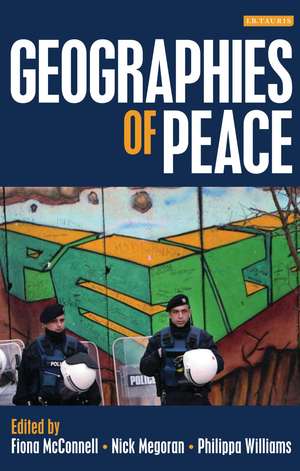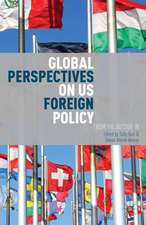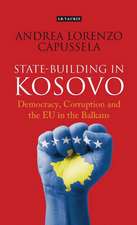Geographies of Peace: New Approaches to Boundaries, Diplomacy and Conflict Resolution
Editat de Nick Megoran Autor Fiona McConnell, Philippa Williamsen Limba Engleză Hardback – 19 iun 2014
Preț: 775.83 lei
Preț vechi: 1114.13 lei
-30% Nou
Puncte Express: 1164
Preț estimativ în valută:
148.47€ • 161.22$ • 124.72£
148.47€ • 161.22$ • 124.72£
Carte disponibilă
Livrare economică 01-15 aprilie
Preluare comenzi: 021 569.72.76
Specificații
ISBN-13: 9781780761435
ISBN-10: 1780761430
Pagini: 320
Ilustrații: 4 bw integrated
Dimensiuni: 156 x 234 x 33 mm
Greutate: 0.64 kg
Ediția:New.
Editura: Bloomsbury Publishing
Colecția I.B.Tauris
Locul publicării:London, United Kingdom
ISBN-10: 1780761430
Pagini: 320
Ilustrații: 4 bw integrated
Dimensiuni: 156 x 234 x 33 mm
Greutate: 0.64 kg
Ediția:New.
Editura: Bloomsbury Publishing
Colecția I.B.Tauris
Locul publicării:London, United Kingdom
Notă biografică
Fiona McConnell is Lecturer in Human Geography and Tutorial Fellow at St Catherine's College, Oxford University. Her research interests include the everyday construction of statehood and sovereignty in cases of tenuous territoriality. Nick Megoran is Lecturer in Political Geography, Newcastle University. He researches the geographies and geopolitics of post-Cold War interstate relations, especially the building of nation-states in Central Asia and the place of religion and the church in war and peace. Philippa Williams is Lecturer in Human Geography, School of Geography, Queen Mary University of London. She is interested in questions of violence and non-violence, citizenship, marginalization, and the politics of development in South Asia.
Cuprins
List of contributorsAcknowledgementsForeword by Oliver P. Richmond Introduction: geographical approaches to peacePart I : Contesting narratives of peacePart II : Techniques of PeacemakingPart III : Practices of CoexistenceBibliographyIndex











